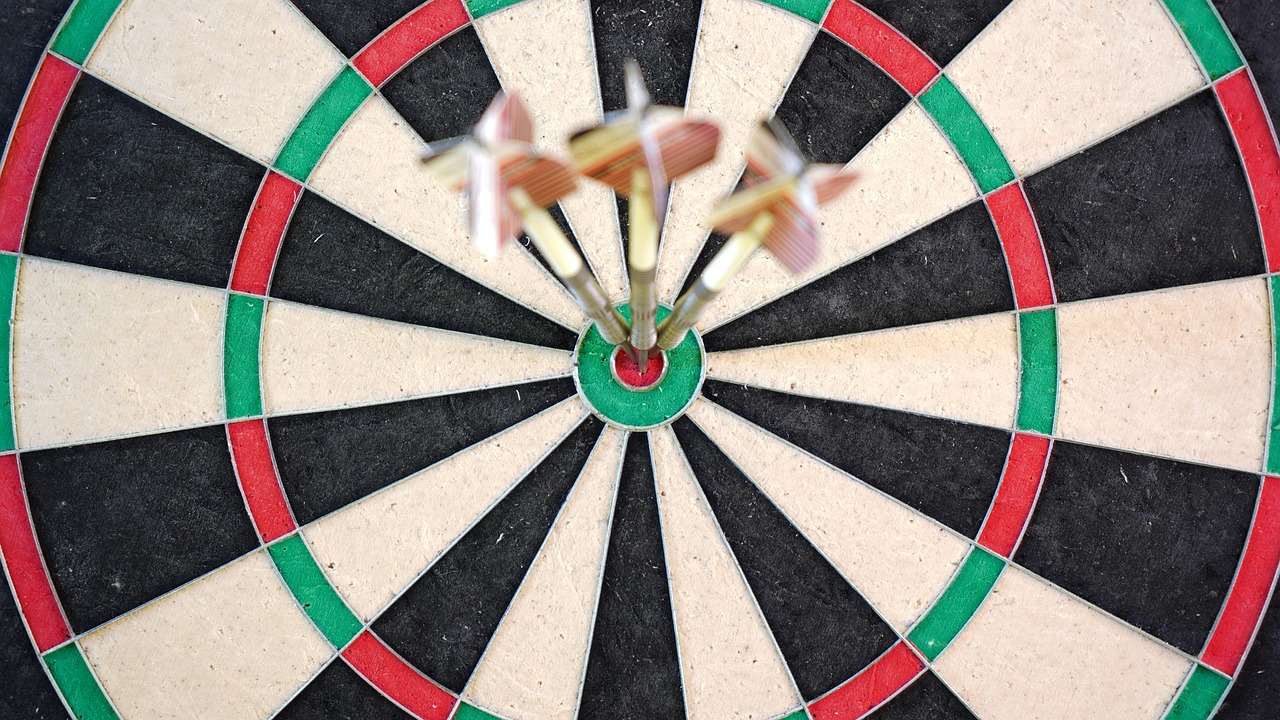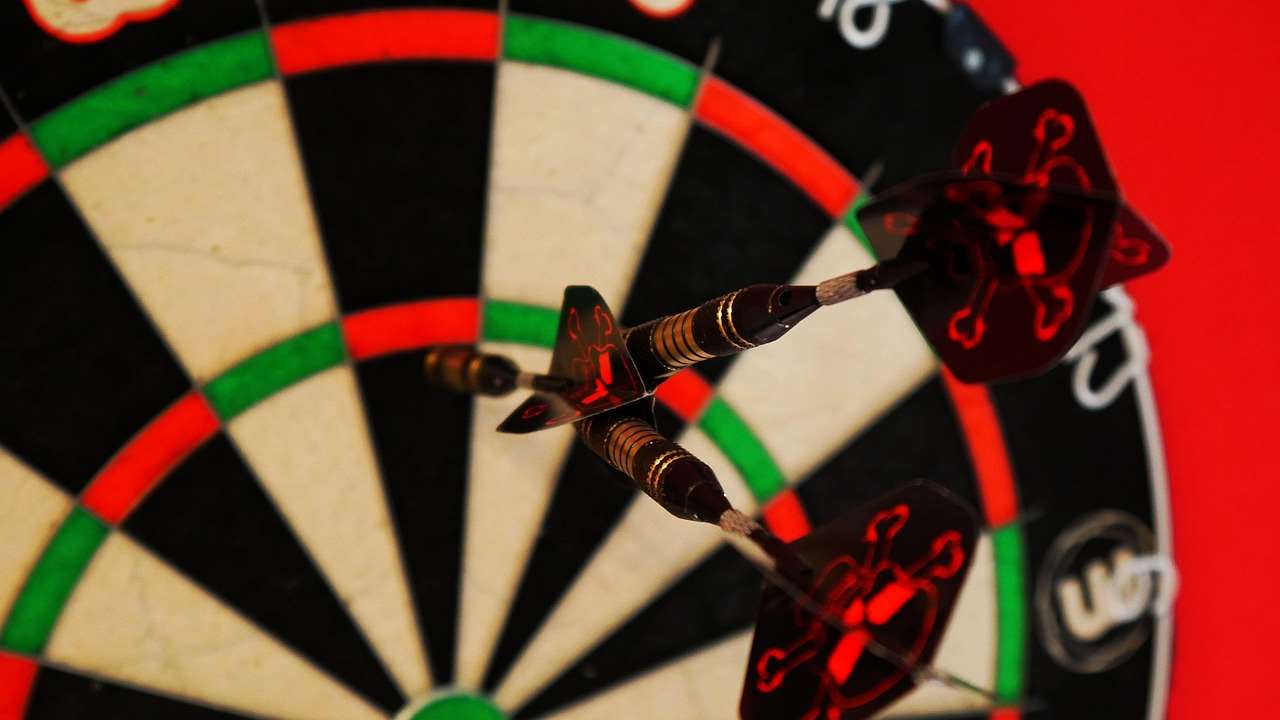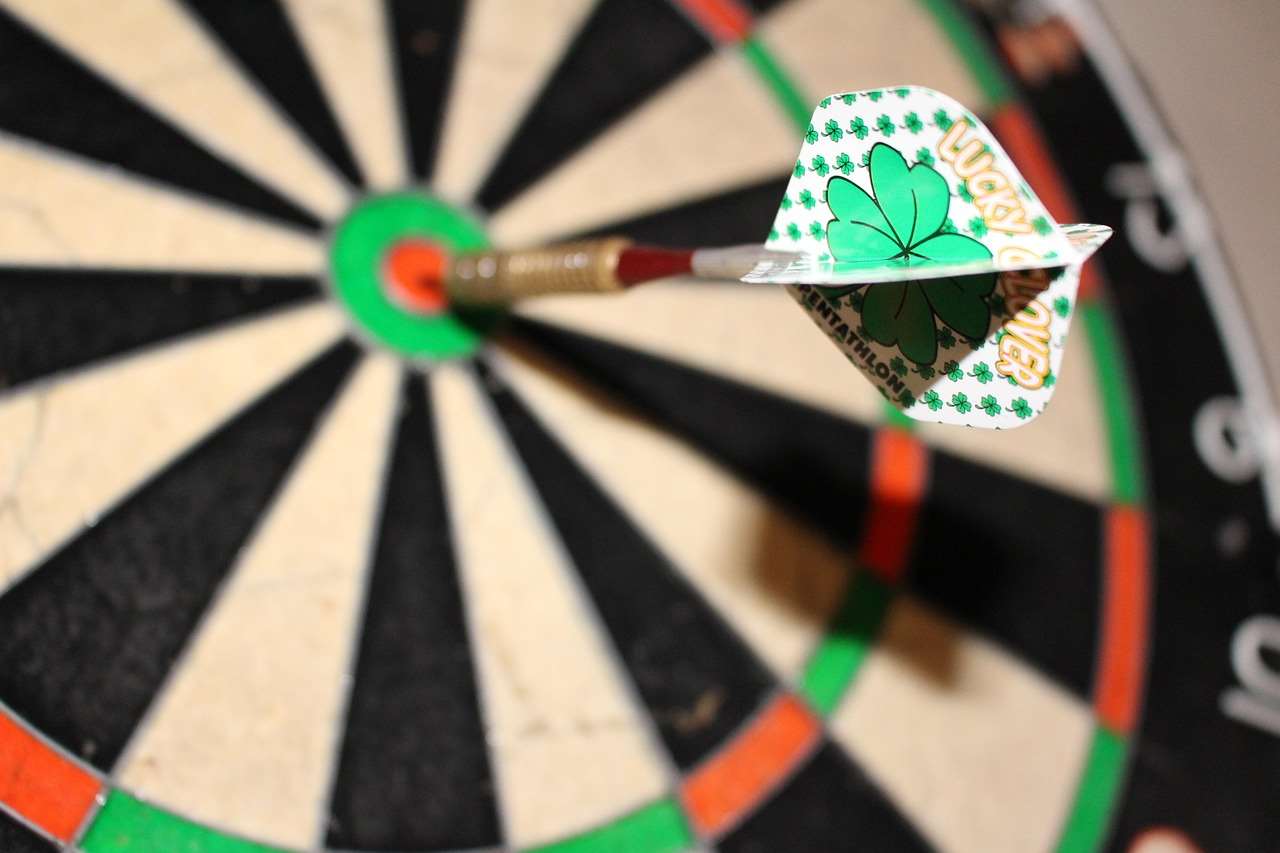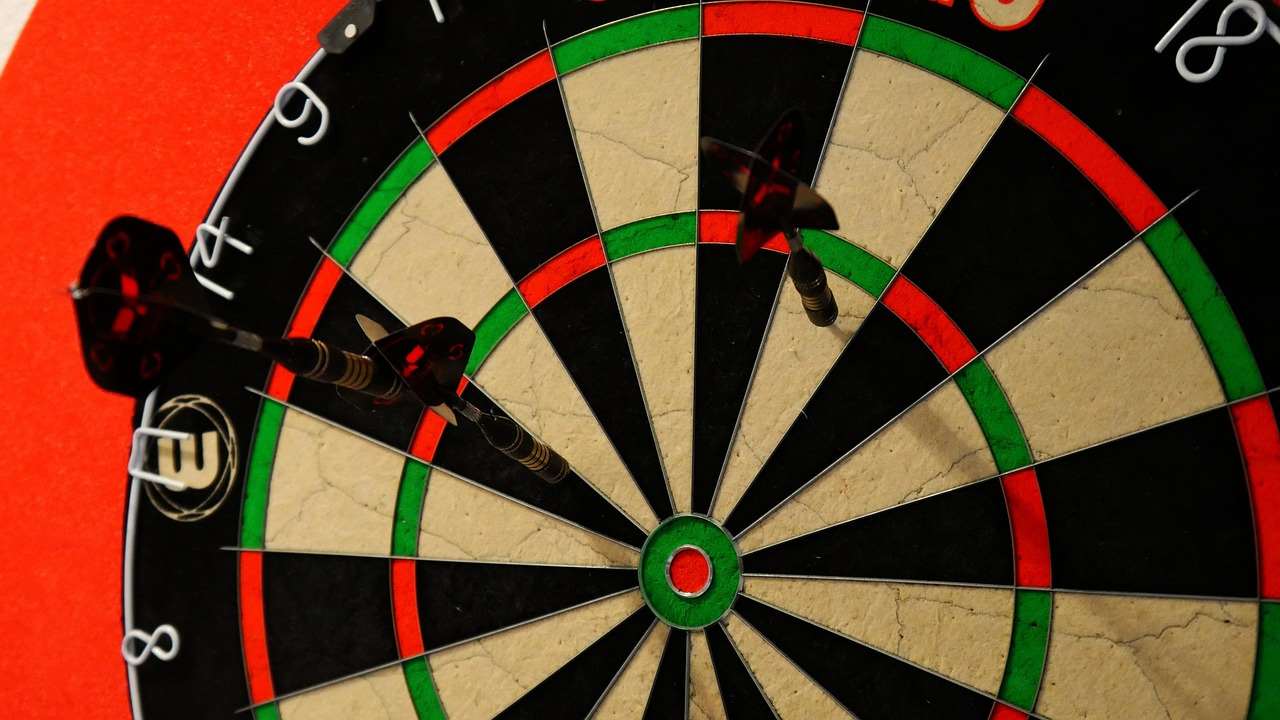Understanding the differences between the Professional Darts Corporation (PDC) and the World Darts Federation (WDF) is crucial for any darts enthusiast, and this PDC WDF comparison infographic guide helps break down those complexities. This article will explore the nuances of each organization, highlighting their structures, tournaments, and significance in the world of professional darts.
⚠️ Still Using Pen & Paper (or a Chalkboard)?! ⚠️
Step into the future! The Dart Counter App handles all the scoring, suggests checkouts, and tracks your stats automatically. It's easier than you think!
Try the Smart Dart Counter App FREE!Ready for an upgrade? Click above!
Decoding the Darts Landscape: A PDC WDF Comparison Infographic Guide
The world of darts can seem confusing, especially for newcomers. Two major organizations, the PDC and the WDF, govern professional and amateur play, respectively. A clear PDC WDF comparison infographic guide provides a visual aid to understand their distinct roles and contributions to the sport. This guide will serve as a comprehensive overview, explaining the key differences and similarities between these two powerhouses.

What is the Professional Darts Corporation (PDC)?
The Professional Darts Corporation (PDC) represents the pinnacle of professional darts. Established in 1992, it was formed by leading players who sought greater control over their careers and a more lucrative tournament structure. The PDC quickly became synonymous with innovation, offering higher prize money and a more entertaining format, attracting top talent from around the globe.
- Focus on Professionalism: Emphasizes full-time professional players.
- High Prize Money: Tournaments boast significant prize pools.
- Televised Events: Broad exposure through major networks.
The PDC World Championship, held annually at Alexandra Palace in London, is its flagship event, drawing massive crowds and television audiences. The PDC’s growth has significantly impacted the sport, raising its profile and transforming it into a commercially successful entertainment product. Understanding the Business of Darts is critical to grasping the PDC’s success.
What is the World Darts Federation (WDF)?
The World Darts Federation (WDF) serves as the governing body for amateur darts worldwide. Established in 1976, the WDF’s primary focus is to promote darts at the grassroots level, supporting national federations and organizing tournaments for amateur players. The WDF aims to nurture talent and provide a pathway for players to develop and potentially transition into the professional ranks.
- Focus on Amateur Darts: Supports amateur players and national federations.
- Grassroots Development: Promotes darts at the local and regional levels.
- Global Reach: Operates in numerous countries worldwide.
The WDF World Championship (previously known as the Lakeside World Championship) is its premier event, showcasing top amateur talent. The organization strives to maintain fair play and uphold the integrity of the sport at all levels.
Key Differences: A Detailed PDC WDF Comparison
To truly understand the PDC WDF comparison infographic guide, let’s examine the key differences between the two organizations:
- Level of Competition: The PDC focuses on professional players, while the WDF caters to amateur players.
- Prize Money: PDC tournaments offer significantly higher prize money compared to WDF events.
- Tournament Structure: The PDC has a more streamlined and commercially focused tournament structure, with a clear ranking system.
- Media Coverage: PDC events receive extensive television coverage, while WDF events typically have limited media exposure.
- Governing Structure: The PDC is a private organization, while the WDF is a non-profit federation.
These distinctions highlight the fundamentally different roles these organizations play within the world of darts. A PDC WDF comparison infographic guide visualizes these differences for easy comprehension.
Tournament Landscape: PDC vs. WDF
The tournaments organized by the PDC and WDF reflect their respective focuses. The PDC hosts major televised events such as the World Championship, Premier League Darts, and World Matchplay. These tournaments attract the best players and generate significant revenue through ticket sales, sponsorship, and broadcasting rights.

The WDF, on the other hand, organizes tournaments like the WDF World Championship, WDF World Cup, and various regional championships. These events provide opportunities for amateur players to compete at a high level and gain valuable experience. While the WDF tournaments may not have the same level of prestige or prize money as PDC events, they are essential for nurturing talent and promoting darts at the grassroots level.
The Player Pathway: From WDF to PDC
Many professional darts players begin their careers in the WDF before transitioning to the PDC. The WDF provides a valuable platform for players to hone their skills and gain exposure. Success in WDF tournaments can open doors to the PDC Q-School, a qualifying event that offers players the chance to earn a PDC Tour Card, granting them entry into PDC tournaments.
The pathway from the WDF to the PDC is not always straightforward, but it represents a common route for aspiring professional players. The PDC’s Q-School has become a crucial stepping stone for many players seeking to make a living from darts. Understanding darts broadcasting rights explained helps understand the financial incentives driving this transition.
The Impact of Television and Sponsorship
Television and sponsorship play a crucial role in the success of both the PDC and the WDF, although to vastly different degrees. The PDC’s extensive television coverage, particularly through networks like Sky Sports, has been instrumental in raising the sport’s profile and attracting sponsors. Major sponsors such as Unibet, BoyleSports, and Cazoo invest heavily in PDC events, contributing to the high prize money and overall professionalism of the organization.

The WDF, while not enjoying the same level of television exposure, still benefits from sponsorship at the national and regional levels. These sponsorships help support amateur tournaments and provide resources for player development. Securing more substantial darts tv rights value deals would undoubtedly boost the WDF’s ability to promote the sport and support its players.
The Future of Darts: Collaboration or Competition?
The relationship between the PDC and the WDF has evolved over time, and the future of darts may depend on the level of collaboration or competition between the two organizations. While they currently operate independently, there is potential for greater cooperation in areas such as player development, tournament scheduling, and anti-doping policies.
Some argue that a more unified structure would benefit the sport as a whole, creating a clearer pathway for players and streamlining the governance of darts. Others believe that competition between the PDC and the WDF drives innovation and provides players with more options. The how darts media deals work heavily influences the power dynamic.

Emerging Trends in Darts
Several emerging trends are shaping the future of darts. The rise of online darts platforms is providing new opportunities for players to compete and develop their skills. The increasing popularity of darts in new markets, such as Asia and North America, is expanding the sport’s global reach. The growing focus on data analytics and performance tracking is helping players optimize their training and improve their game.
- Online Darts Platforms: Increased accessibility and competition.
- Global Expansion: Growing popularity in new markets.
- Data Analytics: Improved player performance through data tracking.
These trends suggest a bright future for darts, with continued growth and innovation expected in the years to come.
Creating Your Own PDC WDF Comparison Infographic
Understanding the core components of a successful PDC WDF comparison infographic guide is essential. Consider these elements:
- Visual Clarity: Use clear and concise language, avoiding jargon.
- Data Visualization: Employ charts, graphs, and icons to present data effectively.
- Comparison Table: Create a side-by-side comparison of key features.
- Color Coding: Use colors strategically to highlight important information.
- Mobile-Friendly Design: Ensure the infographic is easily viewable on mobile devices.
By following these guidelines, you can create an informative and engaging infographic that helps people understand the differences between the PDC and the WDF.

Conclusion: Mastering the PDC and WDF Darts Landscape
The PDC WDF comparison infographic guide serves as an essential tool for navigating the world of professional and amateur darts. Understanding the key differences between the Professional Darts Corporation (PDC) and the World Darts Federation (WDF) is crucial for players, fans, and anyone interested in the sport. From tournament structures to player pathways, these two organizations play distinct yet vital roles in shaping the darts landscape.
By utilizing the insights from this guide, you can gain a deeper appreciation for the complexities and nuances of darts. Whether you’re an aspiring professional player, a casual fan, or simply curious about the sport, understanding the PDC and WDF will enhance your overall experience. Now, grab your darts and start playing! Consider researching more on darts streaming rights cost for deeper insights into the financials of the sport.
Hi, I’m Dieter, and I created Dartcounter (Dartcounterapp.com). My motivation wasn’t being a darts expert – quite the opposite! When I first started playing, I loved the game but found keeping accurate scores and tracking stats difficult and distracting.
I figured I couldn’t be the only one struggling with this. So, I decided to build a solution: an easy-to-use application that everyone, no matter their experience level, could use to manage scoring effortlessly.
My goal for Dartcounter was simple: let the app handle the numbers – the scoring, the averages, the stats, even checkout suggestions – so players could focus purely on their throw and enjoying the game. It began as a way to solve my own beginner’s problem, and I’m thrilled it has grown into a helpful tool for the wider darts community.